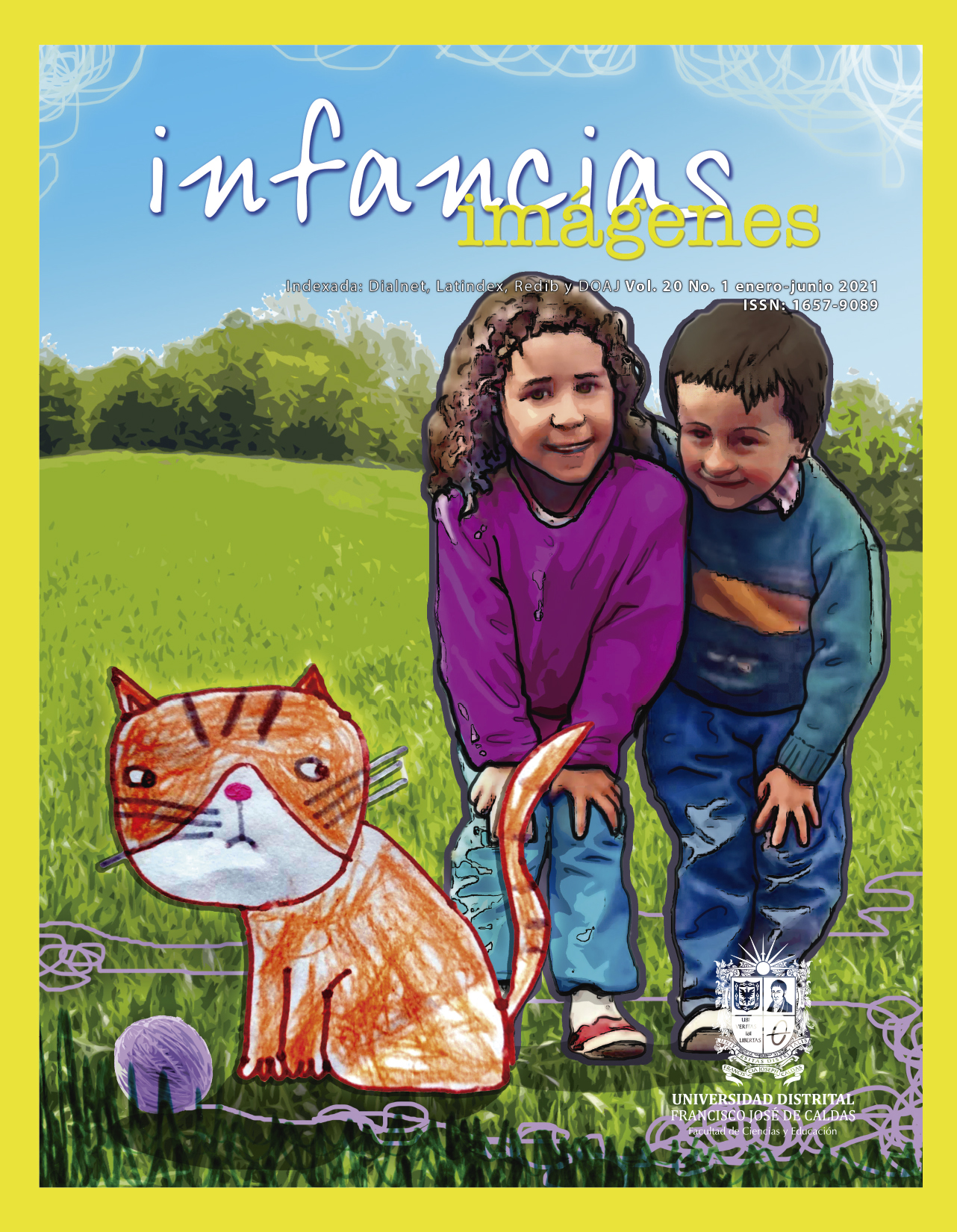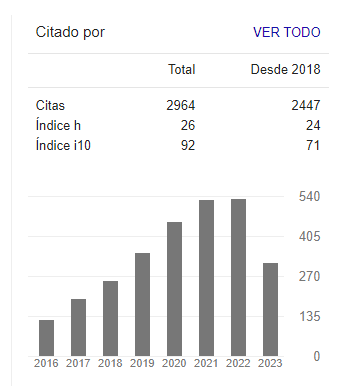DOI:
https://doi.org/10.14483/16579089.19046Publicado:
2021-07-02Número:
Vol. 20 Núm. 1 (2021): enero-junioSección:
Separata especialPrácticas juveniles en la comunicación audiovisual: más allá de las aulas
Juvenile Practices in Audiovisual Communication: Beyond the Classroom
Palabras clave:
cultura juvenil, cultura móvil, dispositivos móviles, conectividad, estrategias de pensamiento, tecnología (es).Descargas
Resumen (es)
Las prácticas juveniles están asociadas a contextos sociales y culturales muy específicos. Este trabajo se sitúa en el entorno de las sociedades occidentales, europeas o americanas. Los grupos que viven allí se definen, sin duda, por rasgos específicos, pero también por otros que tienen en común, especialmente el hecho de participar de un universo global mediado por instrumentos digitales, donde prima la movilidad y la rapidez en la comunicación. Reflexionaré sobre ello en estas páginas: mostraré primero qué significa vivir en una sociedad móvil y, a continuación, me detendré en las oportunidades educativas que ello ofrece fuera de las aulas: por ejemplo, la manera en que, en los entornos comunicativos que allí se generan, la gente joven puede aprender a construir historias o a pensar científicamente; también a desarrollar lenguajes multimodales y, finalmente, a tomar conciencia de que viven en comunidades en las que se comparten valores.
Resumen (en)
Juvenile practices are associated with very specific social and cultural contexts. This work is situated within the environment of western societies, be it European or American. The groups living there are undoubtedly defined by specific traits, but also by other common ones, especially by the fact that they participate in a global universe mediated by digital instruments, where mobility and swiftness in communication prevail. I shall reflect on this matter within these pages: I will first show what it means to live in a mobile society, and then I will dwell on the educational opportunities that this offers outside the classroom: for example, the way in which, within the environments generated therein, young people can learn to build stories or think scientifically, as well as to develop multimodal languages and, finally, to become aware of the fact that they live in communities where values are shared.
Referencias
Bagwell, C., and Schmidt, M. E. (2013). Friendships in childhood & adolescence. Guilford.
Bnw_greatshots (s.f.). Bnw_greatshots. [Fotografia]. Instagram.
Campo, N. (2020). High School Gioberti, Turin, Italy. [Fotografia]. Gettyimages. https://www.gettyimages.com.mx/detail/fotograf%C3%ADa-de-noticias/some-students-of-high-school-gioberti-follow-a-fotograf%C3%ADa-de-noticias/1229606157
Chambers, D. (2013). Social media and personal relationships: Online intimacies and networked friendship. Palgrave Macmillan.
Dougherty, A. M. (2010). New medium, new practice: civic production in live-streaming mobile video. Massachusetts Institute of Technology. http://hdl.handle.net/1721.1/59571
Fisher, J. [@jordan_fisher]. (10 de febrero de 2020, b). #PumpkinCreamColdBrew [Vídeo]. TikTok. https://bit.ly/3kRpNrD
Fisher, J. [@jordan_fisher]. (17 de enero de 2020, a). #EmoteRoyaleContest [Vídeo]. TikTok. https://bit.ly/3337fyA
Gee, J. P. and Hayes, E. (2011). Language and learning in the digital age (1st ed.). Routledge. https://doi.org/10.4324/9780203830918
Green, L. (Ed.). (2021). The Routledge companion to digital media and children. Routledge. https://doi.org/10.4324/9781351004107
Hill, A., Hartmann, M. and Andersson, M. (Eds.). (2021). The Routledge handbook of mobile socialities (1st ed.). Routledge. https://doi.org/10.4324/9781003089872
Ito, M. (2017). How do new media change teen’s social lives and identities? In Children in a Digital World. UNICEF.
Jenkins, H. (2015). Democracy, Civic Engagement, and Activism. In H. Jenkins, M. Ito, and D. Boyd (Eds.), Participatory culture in a networked era: a conversation on youth, learning, commerce, and politics (pp. 152-179). Polity Press.
Jenkins, H., Ito, M., and Boyd, D. (2015). Participatory culture in a networked era: a conversation on youth, learning, commerce, and politics. Polity Press.
Jewitt, C., Bezemer, J. and Van Leeuwen, T. (2020). Tribute to Gunther Kress (1940-2019): reflecting on visuals that shaped his work. Visual Communication, 19(1), 3-11. https://doi.org/10.1177/1470357219883517
John-Steiner, V. (1985/1997). Notebooks of the mind. Explorations of thinking. Revised. Oxford University Press.
Kress, G. R. (2003). Literacy in the new media age. Routledge. https://doi.org/10.4324/9780203299234
Lacasa, P. (2020). Adolescent fans. Practices, discourses, and communities. Peter Lang. https://doi.org/https://doi.org/10.3726/b14291
Pokimane. [@poki]. (18 de enero de 2020). #EmoteRoyalecontest, #EpicPartner [Vídeo]. TikTok. https://www.tiktok.com/@poki/video/6783159410093985029
Ryan, M.-L. (2019). Narration in Various Media. In Hühn, P., Meister, J. C., Pier, J., Schmid, W., and Schönert, J. (Eds.), The living handbook of narratology. Hamburg University. http://www.lhn.uni-hamburg.de/article/narration-various-media
Silva, A. (2016). Dialogues on Mobile Communication. Routledge.
Vanden, M. (2016). Mobile youth culture: A conceptual development. Mobile Media & Communication, 4(1), 85-101. https://doi.org/10.1177/2050157915601455
Cómo citar
APA
ACM
ACS
ABNT
Chicago
Harvard
IEEE
MLA
Turabian
Vancouver
Descargar cita
Licencia

Esta obra está bajo una licencia internacional Creative Commons Atribución-NoComercial-CompartirIgual 4.0.
Reconocimiento – NoComercial – CompartirIgual (by-nc-sa): No se permite el uso comercial de la obra original, las obras derivadas deben circular con las mismas condiciones de esta licencia realizando la correcta atribución al autor.
Esta obra está bajo una licencia de Creative Commons Reconocimiento-NoComercial-CompartirIgual 4.0 Internacional






1.png)

